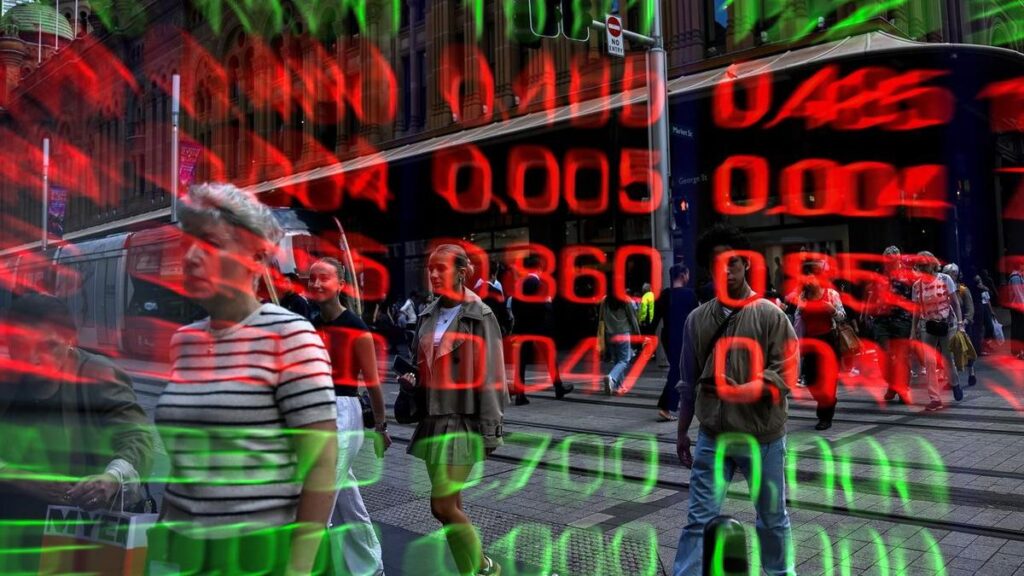The Australian share market has hit a three-month high after Wall Street rallied in its first session since US President Donald Trump’s latest tariff backflip.
By midday on Wednesday, the S&P/ASX200 was up 15.2 points, or 0.18 per cent, to 8,422.6, as the broader All Ordinaries rose 20.4 points, or 0.24 per cent, to 8,651.9.
The local bourse was riding overnight momentum from Wall Street overnight, where the S&P500 jumped two per cent and the tech-heavy Nasdaq rallied 2.47 per cent, as President Trump flagged progress in European Union trade talks.
Mr Trump roiled markets on Friday when he threatened 50 per cent duties on EU goods, before delaying their start date to July 9.
“(A) more constructive tone in the US-EU trade negotiations injected a good dose of optimism into financial markets,” Westpac senior economist Mantas Vagnas said.
“An unexpected improvement in the US consumer confidence in May also supported risk assets.”
Concerns about public finances in the United States and Japan also eased, as the world’s first- and third-largest bond markets rallied, pushing yields lower and boosting confidence.
Australia’s top-200 stocks surged 47.5 points, or 0.57 per cent in early trading to within 1.2 per cent of its best ever close, but eased ahead of a monthly inflation print, which came in slightly higher than forecast.
Monthly consumer price index figures came in steady in the 12 months to April at 2.4 per cent, hotter than the forecast 2.3 per cent.
Nine of 11 local sectors were trading higher by lunchtime, with IT stocks leading gains with a 1.7 per cent rally, tracking with US tech strength ahead of an expected bumper earnings report from chipmaker Nvidia on Wednesday night.
Banks gave up a lot of their early gains, with financials rallying 0.5 per cent in the first hour of trading before easing to a 0.1 per cent gain by midday.
The Commonwealth Bank was grinding higher, up 0.2 per cent to $175.71 as NAB, ANZ and Westpac sold off.
Most miners were heavy, with the materials sector slipping 0.3 per cent as iron ore prices fell to a more than two week low, weighing on BHP and Rio Tinto.
Gold miners were a mixed bag as the precious metal’s price continued to consolidate around $US3,300 ($A5,132) an ounce.
Energy stocks rose 1.1 per cent as oil prices pushed Woodside and Santos higher, as coal miners Whitehaven (+2.8 per cent) and New Hope Corporation (+2.0 per cent) rallied.
Brent crude futures are trading at $US63.77 a barrel, edging higher as the US banned Chevron from exporting Venezuelan oil.
The Australian dollar sold off by roughly 0.3 per cent in the wake of the inflation print and is buying 64.33 US cents, down from 64.75 on Tuesday at 5pm.
While Wednesday’s inflation figures were higher than expected, headline CPI of 2.4 per cent and 2.8 per cent trimmed mean inflation – the RBA’s preferred measure – were still within the central bank’s target range, State Street Markets APAC strategy head Dwyfor Evans.
“Given the continued uncertainty around tariffs, strong jobs market and the base effects pressures in Q3, expect the RBA to maintain its cautious stance on prospective easing,” he said.



